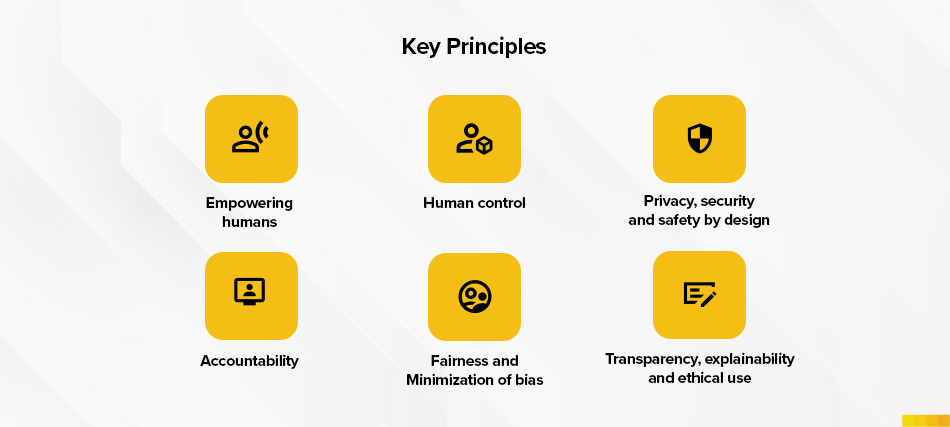As many designers and developers started integrating AI into their work the lines between human and machine creativity are blurring. The most important concern that is rising is its ethical implications. Designers have to walk on a tightrope balancing innovation and human intellect which becomes a critical responsibility.
Why the Urgency?
AI algorithms learn from the data they’re fed, and unfortunately, that data can reflect real-world biases and inequalities. This poses serious risks in design, potentially perpetuating discrimination, manipulating users, or infringing on privacy. It’s not just about avoiding harm; it’s about building trustworthy, inclusive, and sustainable design solutions.
While we are navigating towards generative AI to make our workflow easier, there are many potential risks and problems associated with it. Discrimination and bias, copyright infringement, human and AI collaboration, data privacy and security concerns are the major setbacks we face in ethical design.
- Discrimination and bias: Bias in AI-generated design is caused by improper training and inadequate data sets potentially causing discrimination among marginalized populations.
- Copyright Infringement: Integrating AI demands a cautious approach to avoid copyright troubles. Unlawful utilization of copyrighted content in AI training data may incur serious legal repercussions for marketers.
- Human Vs AI Creativity: There will be constant anxiety in designers to compete with AI, which will give rise to upskilling and matching capabilities with AI. It can lack in evoking emotions, empathy, and inclusiveness.
Designers must navigate the integration of AI with a mindful approach towards its impact on human creativity. The key lies in utilizing AI as a tool to amplify, not replace, human ingenuity. Conscientious examination of the ethical dimensions in AI-infused design is imperative.
Striking a harmonious balance between creativity and ethical considerations is the designer’s responsibility. This approach ensures that AI-driven designs not only push creative boundaries but also adhere to ethical standards, fostering a responsible and innovative design landscape.
Here are the key principles that guide us:

- Fairness and Non-discrimination: Ensure AI tools don’t discriminate based on race, gender, ability, or any other sensitive factor. Use diverse datasets and test for bias at every stage.
- Transparency and Explainability: Don’t let AI’s magic box remain black. Understand how decisions are made and explain them clearly to users and stakeholders.
- Privacy and Security: Protect user data with robust security measures and clear consent protocols. Respect user privacy, and avoid exploiting personal information for profit or manipulation.
- Human Oversight and Accountability: AI shouldn’t replace human judgment. Designers and developers remain responsible for the outcomes, requiring careful oversight and accountability mechanisms.
- Environmental Impact: Consider the environmental costs of AI-powered design processes and tools. Choose energy-efficient solutions and strive for a sustainable future.
Beyond principles, how can we implement these ideas in everyday design practices? Here are some actionable tips:
- Diversity in the Design Team: Assemble a team with diverse perspectives to identify and address potential biases in AI tools and outputs.
- Data Curation and Auditing: Scrutinize your data sources and algorithmic processes to detect and mitigate bias. Regularly audit AI-powered design decisions for fairness and inclusivity.
- User Education and Transparency: Inform users about the role of AI in design, explain how decisions are made, and offer options for opting out of AI-driven experiences.
- Focus on Human-Centered Design: Don’t let AI dictate the design process. Keep human needs and values at the forefront, using AI as a tool to augment, not replace, human creativity.
- Prioritize Sustainability: Choose tools and processes that minimize the environmental footprint of AI-powered design.
AI in design is a powerful tool, but it’s not everything. By embracing ethical principles and implementing responsible practices, we can ensure that AI fosters inclusive, sustainable, and positive design experiences for all.
Remember, the lines between human and machine creativity are blurring, but the responsibility for creating a better future remains firmly in our hands. Let’s design with conscience and make sure AI amplifies the very best of human values.

